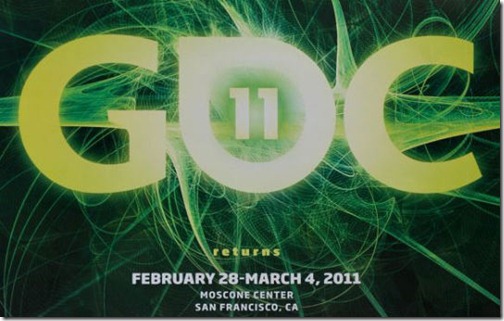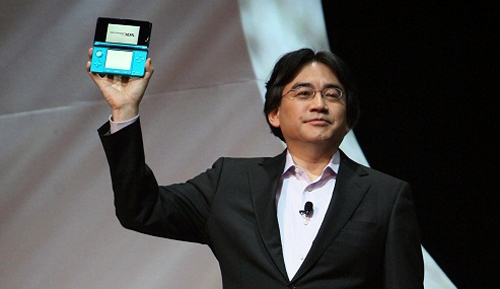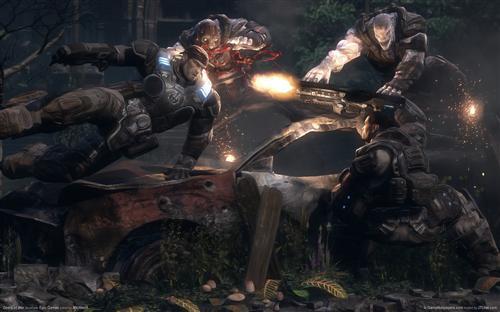GDC大会给开发者的5大启示 涉及游戏开发及销售运营
在2011 GDC大会上,共有1.9万名与会者参加逾450场演讲,创下历史记录。此次盛会汇集游戏业要人,参与者热情激昂地讨论有关游戏艺术和运营的重要事务。本届GDC给人的主要启示是什么呢?虽然盛会涵盖的话题范围甚广,Gamasutra依然总结出盛会带来的5大启示。
1、游戏销售方式多种多样
数年来,这一点已越来越明显。当所有游戏从业者汇聚一堂,该特点便显得尤为突出:游戏可以通过多种方式、多种渠道销售。GDC 2011突显这个发展趋势,众多专家就游戏通过零售、手机、社交网络、云销售和下载等方式销售发表演讲,这些平台都为公司传播和销售游戏提供多种方式。与以往相比,游戏制作者有更多机会向消费者展示他们的游戏。
某主流游戏开发商告知媒体,这不仅影响到游戏制作者销售游戏的方式,还对大型公司的员工招募构成威胁。现在,人们根本不用担心因缺乏工作经验而被人拒之门外。招聘人员的选择越来越少,却有更多人在允许个人发布作品的平台上制作出精美的游戏。这些富有创意的人或被较大的公司所收纳,或继续愉快地在独立开发者这条路上发展。
游戏邦认为,新平台的兴起同样显示出传统单机游戏和掌机游戏的商业模式发展速度不足。随着Facebook、手机游戏和网络游戏公司逐渐采用新型商业模式,这些获主流消费者青睐的模式与单机游戏封闭式的销售模式存在冲突。对主流单机游戏开发商而言,零售和DLC仍然可用,但他们也在逐渐流行的直面消费者销售战略上展开行动。到最后,消费者有权从目前如此多的渠道中选择获取游戏的方式,而老式营销手段在竞争中处于弱势。
2、手机和掌机的对决
随着苹果公司的iPhone逐渐发展成为游戏平台,问题也随之产生:iPhone和iPod Touch是否会对传统掌机制造商任天堂和索尼构成威胁呢?也就是说,大家想知道苹果和掌机制造商是否正处于激烈竞争中。
GDC 2011消除众人的疑问,手机和掌机确实正上演精彩对决。任天堂总裁岩田聪在2009年时说过,任天堂DSi与苹果手机间并不属于竞争关系,但是现在他不得不花费精力处理手机游戏对掌机游戏的影响。他在GDC 2011发布会上说道:“对社交游戏和手机游戏公司而言,游戏内容出自他人之手。他们的目标只是尽量汇集更多的软件和应用,这是他们的盈利方式。至于视频游戏软件质量如何,与他们并没有关系。但现实在于我们开发的游戏是富有价值的,因而我们必须努力保护这些价值。”
当岩田聪发表演讲时,苹果CEO史蒂夫·乔布斯正在隔壁宣传公司最新款的iPad,吸引众多开发者的注意。不过iPad 2发布会与岩田聪的演讲同期举行,或许只是巧合而已。
最后,消费者将来可能会认为进展迅速的Google Android系统和以其与Xbox Live兼容来吸引开发者的微软Windows Phone 7系统才是真正有价值的事物。不久我们就会发现,真正体现软件价值的是索尼公司的Android系统PlayStation认证手机Xperia Play和高端掌机Next Generation Portable。关注低成本、低价游戏的掌机业巨擘任天堂公司将会目睹3DS及其令人瞩目的3D立体图像和某些著名游戏能否抵挡住手机游戏的冲击。
3、无人真正理解“游戏化”的涵义
目前,游戏业两大盛会——DICE峰会和GDC 2011都举行关于“游戏化”的讨论,而众游戏设计专家面临的首要问题几乎相同:“如何理解‘游戏化’?”
此类讨论还在继续,但更多关注的却是这个词的语义。似乎没人知道“游戏化”究竟代表着什么,因此最有趣的争论焦点在于这个词语的涵义。如果连内涵都无法达成一致,那么对游戏化的实际应用更是无从谈起。然而,本届GDC大会对这个词语下的定义十分有趣,充满娱乐色彩。来自佐治亚理工学院的Ian Bogost称之为“向商人阐述游戏最简单的方法,也是将流行文化融入游戏中的有效手段。”Schell Games首席执行官Jesse Schell认为,“游戏化”指让某些并非游戏的事物更具游戏性。
即使做出此类合理清晰的解释,人们在谈论“游戏化”时仍然意见相左,因为这个词语本身就含有多种内涵和意义。最后,GDC 2011对关于游戏化问题的讨论转变为游戏化是否能给玩家带来内在和外在的影响。随后,Schell指出即使连心理学家都无法准确定义“内在”和“外在”。接下来,在GDC 2011上与会者开始讨论游戏业是否还要继续使用这个词语,或许确实应该舍弃它。但从另一方面来说,这些讨论确实带有娱乐性,时常会洞察到游戏中某些有趣的事物。
4、独立游戏发展态势更甚以往
与会者发现GDC 2011独立游戏节(IGF)展厅格外拥挤,但依然可以很明显地看到4个玩家在同时体验Copenhagen Game Collective制作的游戏《B.U.T.T.O.N》。
游戏邦觉得,仅从这一点便可以看出独立游戏正在迅猛发展。Markus “Notch” Persson制作的游戏《Minecraft》在IGF颁奖中勇夺Seumas McNally Grand Prize和Audience Award,还在游戏开发者优选将中获得创新奖、最佳下载游戏和最佳首发游戏三项大奖,几乎可以与大手笔的AAA游戏媲美。与会者踊跃参加《摩纳哥》制作者Andy Schatz、《地狱边境》内容设计师Jeppe Carlsen以及许多出席“失败作品讨论会”的开发者在GDC 2011上所作的报告。
当然,时常有人讨论“什么是独立游戏?”。但或许我们不应该纠结在这个问题上,所有与独立开发相关的盛会以及这些独立游戏中都蕴含着开发者某些独特的天分。在缺乏丰富资源的前提下,越来越多的开发者以他们自己的眼光将生活融入游戏中,给玩家带来许多印象深刻的体验。独立游戏确实与以往大不相同。
5、核心游戏设计依然博得众人关注
虽然GDC 2010上有许多围绕Facebook和手机等新兴平台的讨论,但开发者对传统核心游戏的设计和创造依然有着浓厚的兴趣。
Joel Goodsell和《抵抗》开发公司Insomniac Games在参与者众多的演讲中深度剖析关于格斗的设计,运用幻灯片和视频来传达只与最核心题材——第一人称射击有关的设计手法。
同样在场的还有Epic Games,以《战争机器》和《虚幻竞技场》等游戏迎合核心游戏玩家的口味。Cliff Bleszinski指出,目前游戏设计师已越来越懂得如何面向玩家开发游戏。据游戏邦了解,Epic执行设计师Rod Fergusson还阐述游戏设计的时效性。
来自Ubisoft的Richard Rouse谈论游戏中的道德体系,该内容越来越适合目前那些不断给玩家提供多种选项的游戏。EA公司的Ian Milham讨论的则是投入大笔资金制作的巨著《死亡空间2》中的艺术,Retro Studios描述深入人心的《大金刚国度》和《星际争霸2》的开发过程,首席设计师Dustin Browder解释游戏制作原理。
纵然GDC 2011上关于社交游戏和手机游戏将成为发展趋势以及传统零售模式没落的言论很多,大部分与会者仍然对制作大手笔、真正属于玩家的游戏怀有极大的热情。游戏邦认为,势必有许多在新兴平台上开发游戏的人参加这些核心游戏讨论会,希望能够从核心游戏领域数十年来的开发经验中有所收获。(本文为游戏邦/gamerboom.com编译,转载请注明来源:游戏邦)
Round-Up: The Top 5 Trends Of GDC 2011
The 2011 Game Developers Conference saw a record 19,000 attendees this year across more than 450 lectures. At the event, industry notables converged to discuss and debate, often passionately, the issues most important to the art and business of making games. What were the main takeaways of this year’s GDC? While the event was home to an unusually broad slate of topics, from new social strategies to retro postmortems, we’ve identified five main takeaways from the event that look to be the most notable out of GDC 2011.
There Are A Lot Of Places To Sell Your Game
This is something that’s been increasingly obvious over the past few years, but when the entire games industry converges into one location, it’s all the more clear: there are a lot of places and ways for you to sell your game. This was even more obvious at GDC 2011, where a wide array of professionals gave talks about games for retail, mobile, social, cloud and downloadable with each of these sectors offering various ways for a company to deliver and sell a game through those venues. There are more opportunities than ever for game makers to get their games to consumers.
Not only does this have an impact on the way creators sell their games, it also will have an impact on recruiting at larger organizations, one major publisher told us. The problem of “how do I get experience if no one will hire me without any” is less of an issue. As talent pools go dry for some recruiters, there’s a new body of water formed by people who have made great games on self-publishing-friendly platforms. These creative people are being picked up by bigger companies or happily continuing on independently.
But what the emerging platforms also expose is that business models on traditional consoles and handhelds are not evolving quickly enough. As Facebook, mobile and online game companies embrace new business models, those models that are gaining traction with a true mainstream audience are not entirely compatible with the consoles’ closed ecosystem. Retail and DLC are still viable for the major console publishers, but even they are making moves — and making comments — towards increasingly direct-to-consumer strategies. In the end, consumers will decide how they want their games — with so many options today, the old guard might have a chink in its armor.
Mobile Vs. Handheld Is A Real Battle
As Apple’s iPhone increasingly became a home for games, the question started to arise whether or not the device, along with the iPod Touch, would begin to encroach on territory held by traditional handheld makers Nintendo and Sony. Originally, some wondered whether Apple and the handheld manufacturers were in competition at all.
GDC 2011 erased any doubt that the mobile vs. handheld battle is a real one. Nintendo president Satoru Iwata — who in 2009 said the Nintendo DSi wasn’t in competition with Apple’s mobiles — took time to address competition from mobile games. “For [social and mobile game companies], content is something created by someone else,” he said during his GDC 2011 keynote, without naming names. “Their goal is to just gather as much software as possible, because … that is how they profit. The value of video game software does not matter to them. … The fact is, what we produce has value, and we should protect that value.”
Meanwhile, while Iwata gave his speech, Apple CEO Steve Jobs was right next door talking about his company’s latest version of the iPad, which has already attracted many developers and their games. His reveal just happened to take place during Iwata’s keynote. Maybe it was coincidence.
In the end, it’s consumers who will define “value,” as Google Android continues to pick up speed and Microsoft’s Windows Phone 7 appeals to developers with its Xbox Live connectivity. We’ll find out soon enough what “value” in software means as Sony launches an Android-based PlayStation-certified phone with the Xperia Play and the codenamed high-end Next Generation Portable. And the leader Nintendo, which has expressed concern over low-budget, low-priced games, will see if the Nintendo 3DS and its eye-catching 3D stereoscopic features and stable of known game brands can withstand the push.
No One Really Knows What “Gamification” Is
Now, two industry events — the DICE Summit and GDC 2011 — have hosted gamification “debates” that started out with the exact same question for game design experts: “How do you define gamification?”
These debates then go on and purely become semantics arguments, because it seems no one knows what gamification really is — so the most interesting thing to talk about instead is the word itself and its meaning. It’s hard to talk about gamification’s actual application if no one can agree what it is. Nevertheless, the definitions of the term heard this week were interesting and entertaining. Ian Bogost with Georgia Institute of Technology called it “The easiest way to talk to marketers about games,” adding that it’s “a very efficient way to get a hot cultural commodity into your product.” Schell Games’ Jesse Schell called it “Taking things that aren’t games and trying to make them feel more like games.”
But even with fairly clear interpretations as those, people seem to talk past each other when discussing “gamification,” because the term itself has so many connotations. Eventually at GDC 2011, the gamification debate turned into an issue of whether gamifcation can reward players intrinsically as well as extrinsically. Then Schell pointed out that the definitions of “intrinsic” and “extrinsic” among psychologists is even “squirrely.” Then the GDC 2011 debate became a discussion of whether or not the industry should just stop using the word. Maybe it should. But on the other hand, the discussions still make for good entertainment, and always lead to some kind of interesting insight into what games can be besides escapist male power fantasies.
Indie Games Are Bigger Than Ever
Attendees at the Independent Games Festival Pavilion on GDC 2011 show floor were met with big crowds and typically four people at one time playing increasingly physical games of Copenhagen Game Collective’s B.U.T.T.O.N.
That wasn’t the only sign of sharp rise of talent and interest in the area of indie games. Markus “Notch” Persson’s Minecraft was a big winner not only at the IGF Awards where the game won the Seumas McNally Grand Prize and Audience Award, but it also won awards for innovation, best downloadable game and best debut game at the Game Developers Choice Awards, where it went up against big-budget triple-A titles. Talks from indie developers like Monaco creator Andy Schatz, Limbo gameplay designer Jeppe Carlsen and a number of developers who presented at the “Failure Workshop” were all very well-attended at GDC 2011.
Sure there are always discussions of “what is an indie,” but maybe we shouldn’t look too far into it — at all of these indie-related events and in all of these games related to the term “indie,” there is a certain unique flair. More and more developers are creating memorable experiences without big resources, putting lifestyles on the line for their vision. Indie games really are bigger than ever.
Design For “Core” Games Still Matters
With all the talk surrounding newer platforms like Facebook and mobile, there was still great interest at GDC 2010 for design and production of more traditional “core” games.
Joel Goodsell with Resistance developer Insomniac Games offered up a detailed explanation of combat design in a well-attended lecture, using slides and video to convey design only relatable to one of the most core genres, the FPS.
Epic Games, which unabashedly caters to the core gamer with games like Gears of War and Unreal Tournament, was on hand also. Cliff Bleszinski described the rise of the “power creative,” or the public-facing game designer. Epic’s executive producer Rod Fergusson was also there describing how timeliness is your friend when creating games.
Ubisoft’s Richard Rouse talked about morality systems in games, which is increasingly applicable to today’s titles which continue to offer more and more player choice. Separately, EA’s Ian Milham talked about art direction in big-budget hit Dead Space 2, Retro Studios described the development of the well-received Donkey Kong Country and StarCraft II lead designer Dustin Browder explained how making the game was like “inventing Basketball 2.”
So even though the buzz talk might be around social and mobile trends and how retail is fading, plenty of GDC 2011 attendees showed a lot of passion for making big-budget, “gamers’ games,” and we’re sure that a lot creators who are making games on emerging platforms were in attendance at these talks, ready to learn from years of experience that resides in the core gaming sector. (Source: Gamasutra)











































 闽公网安备35020302001549号
闽公网安备35020302001549号